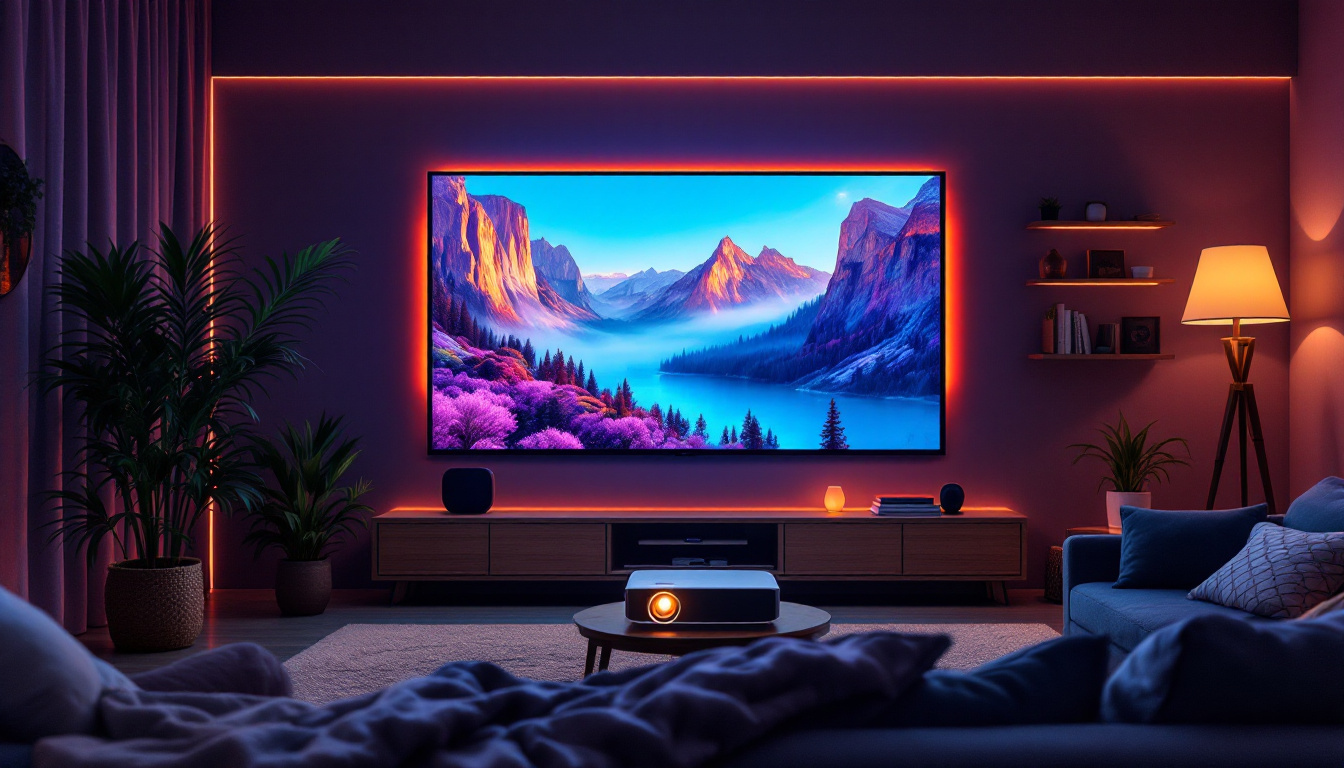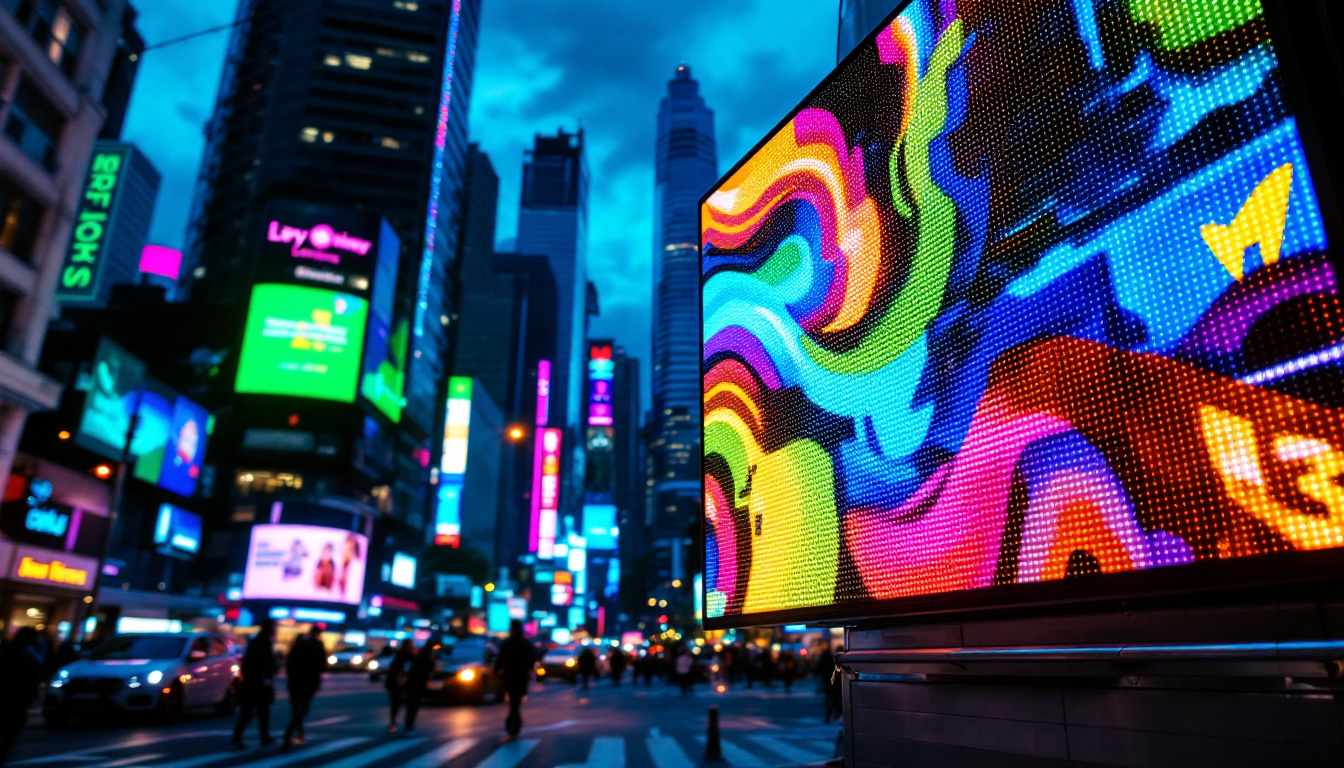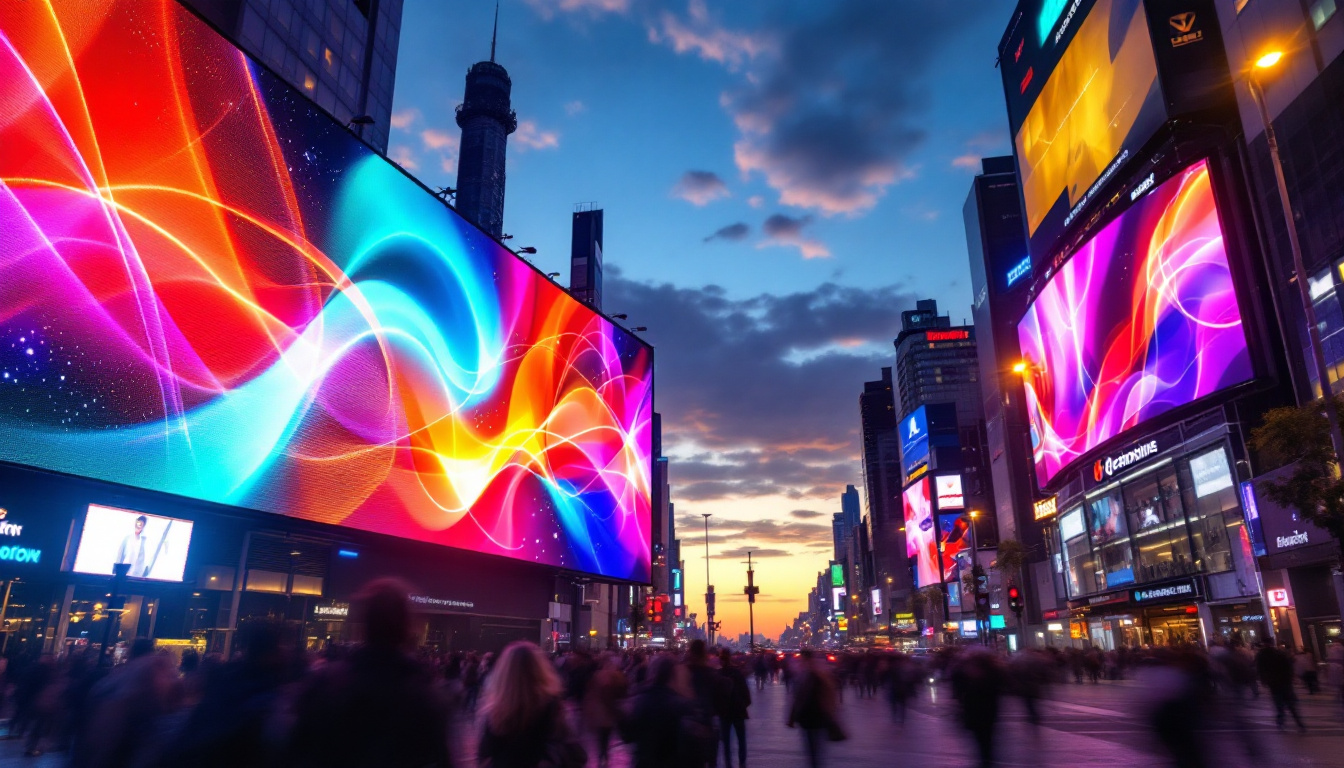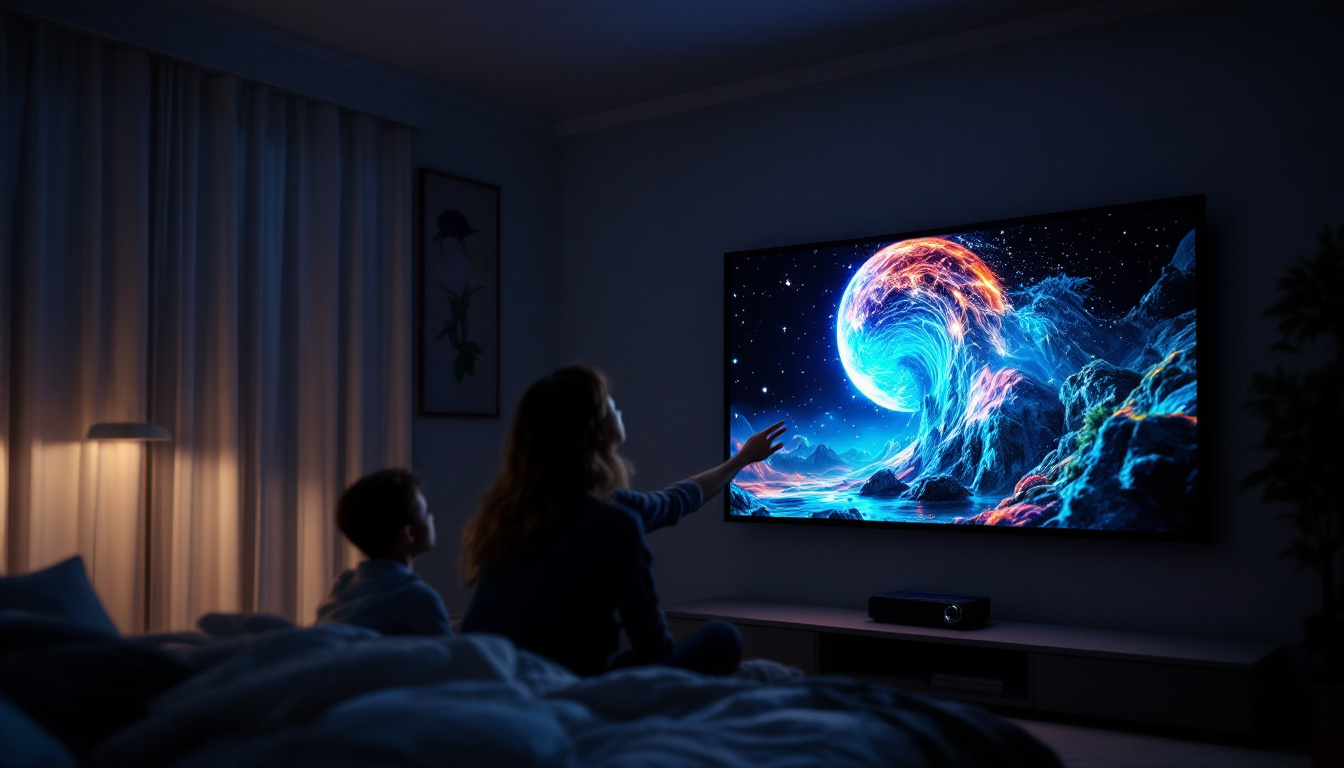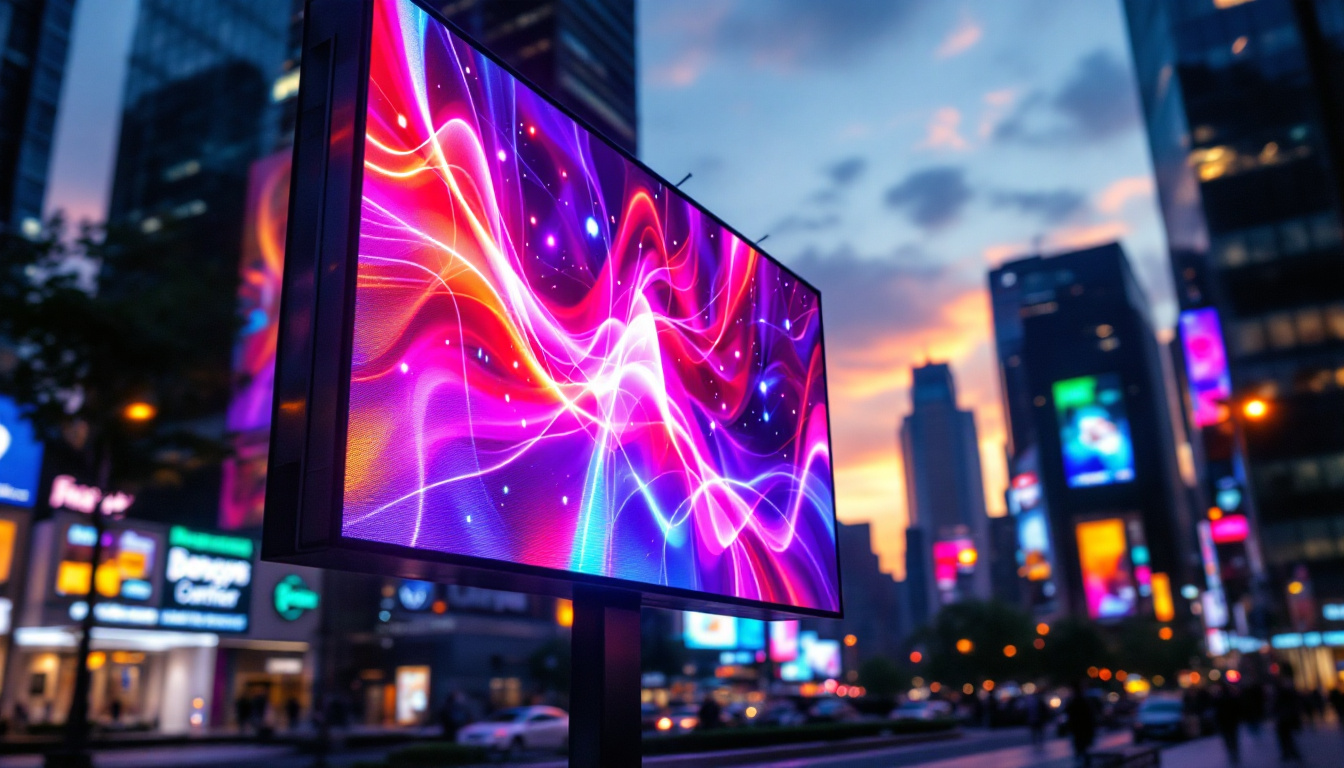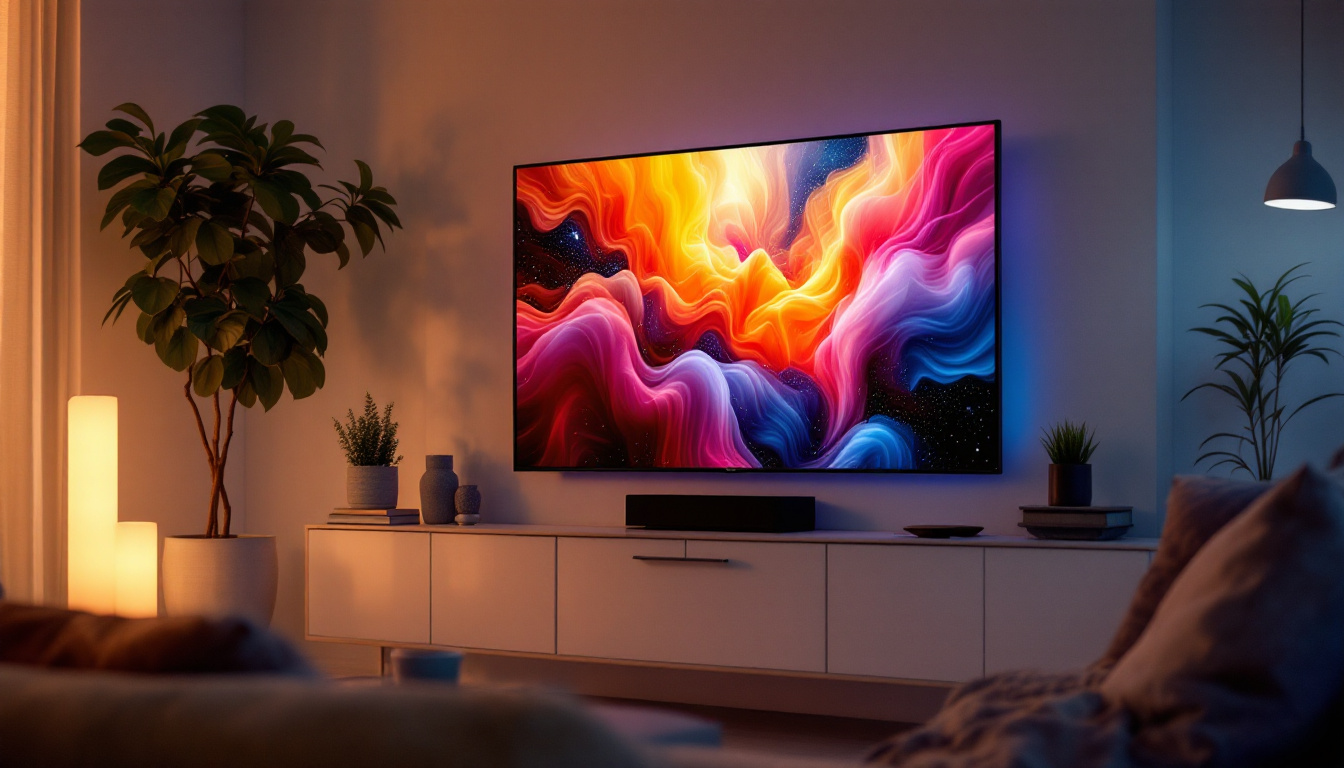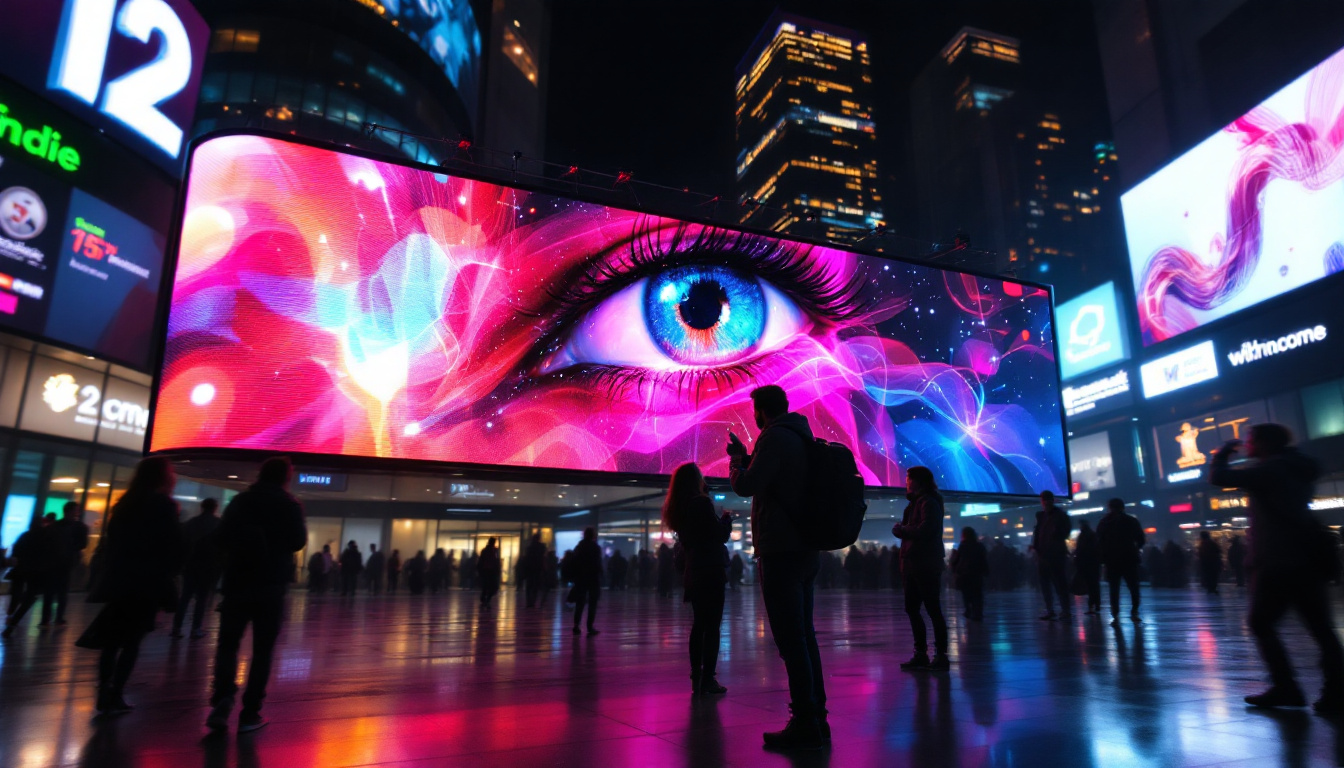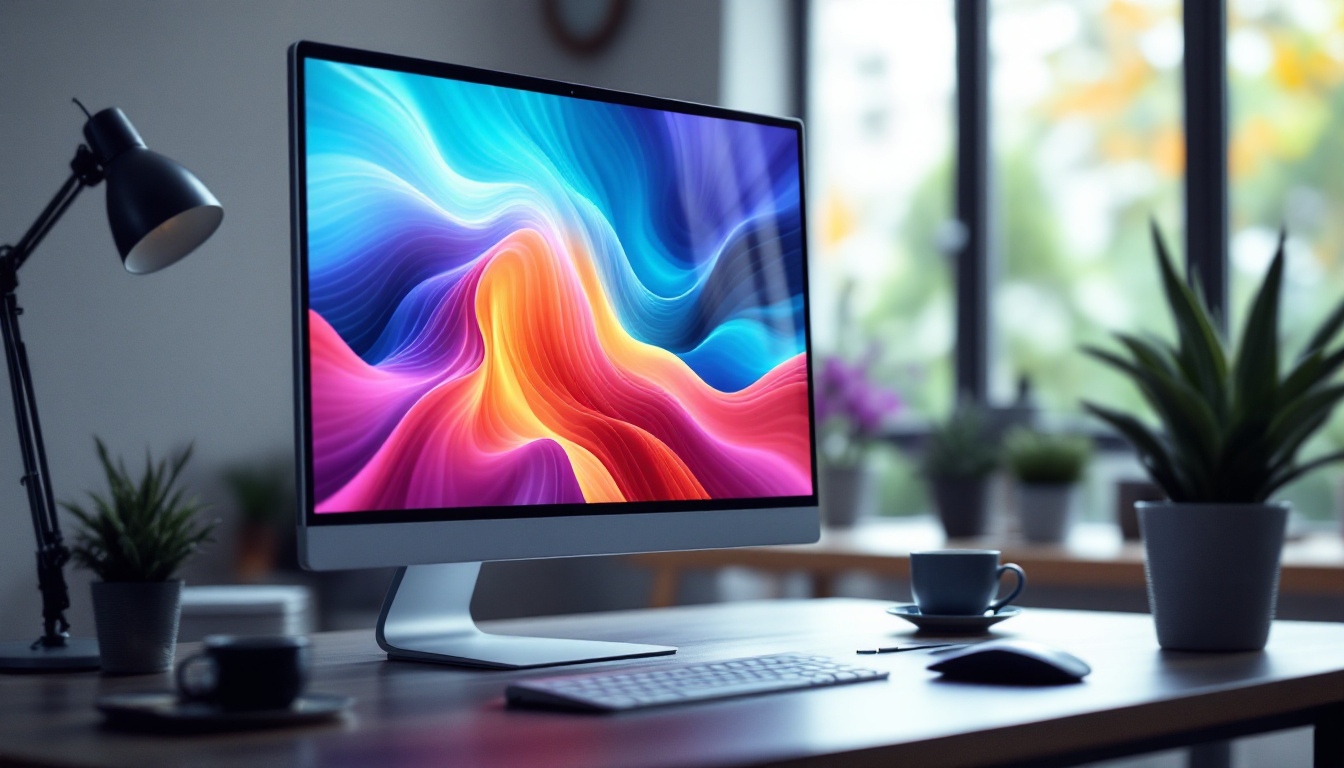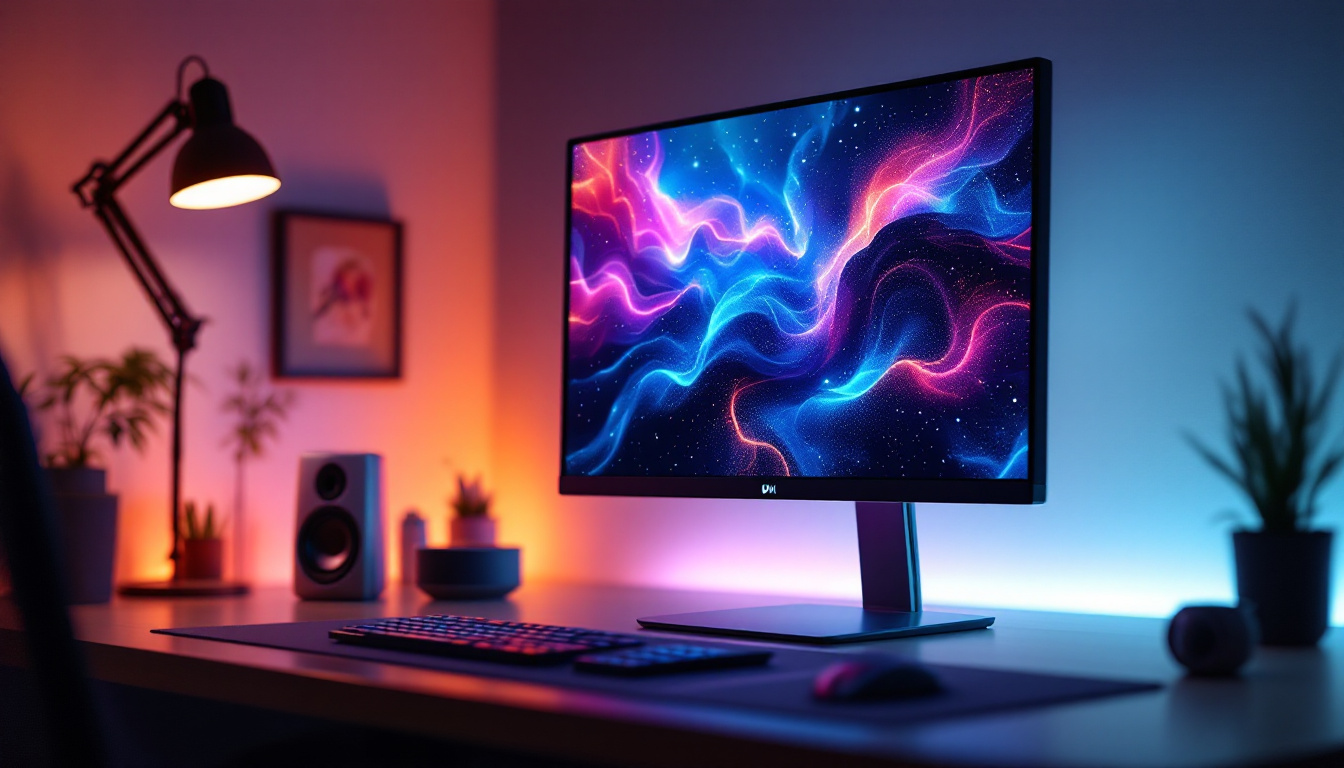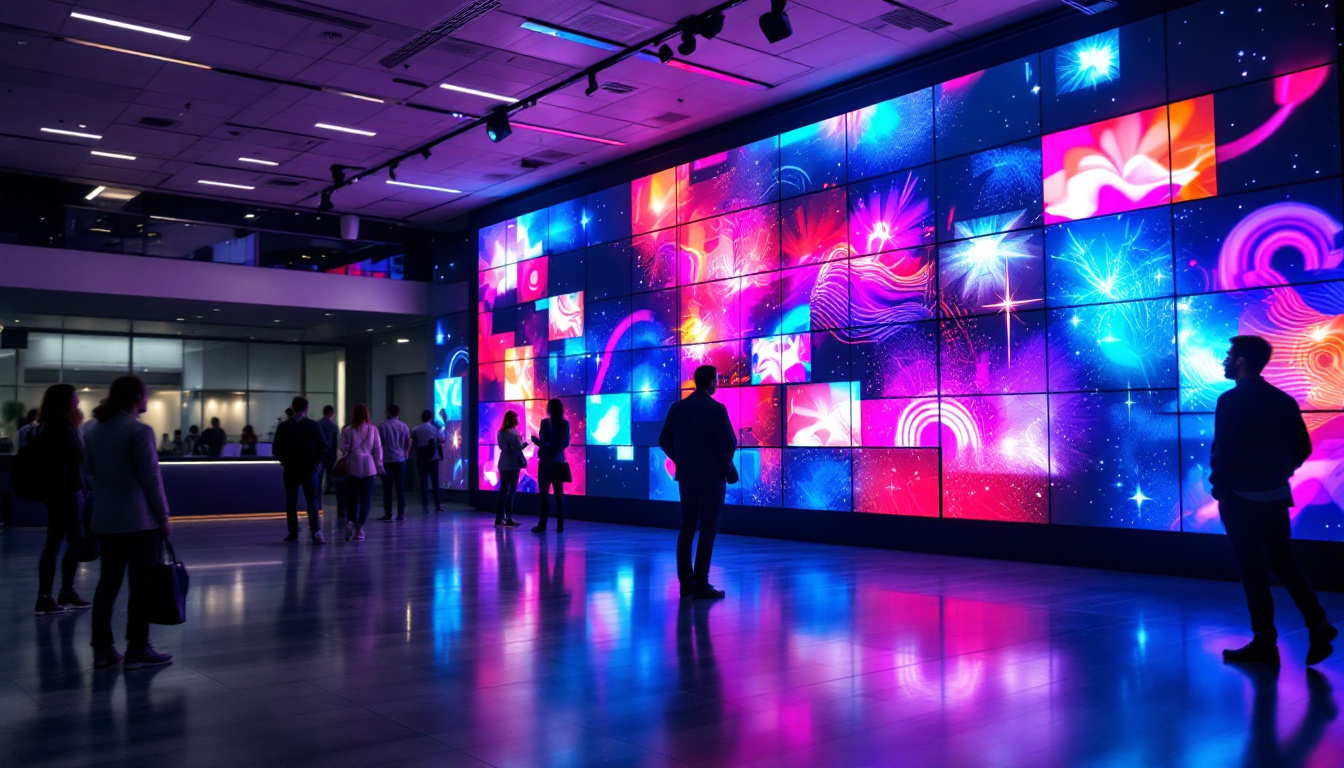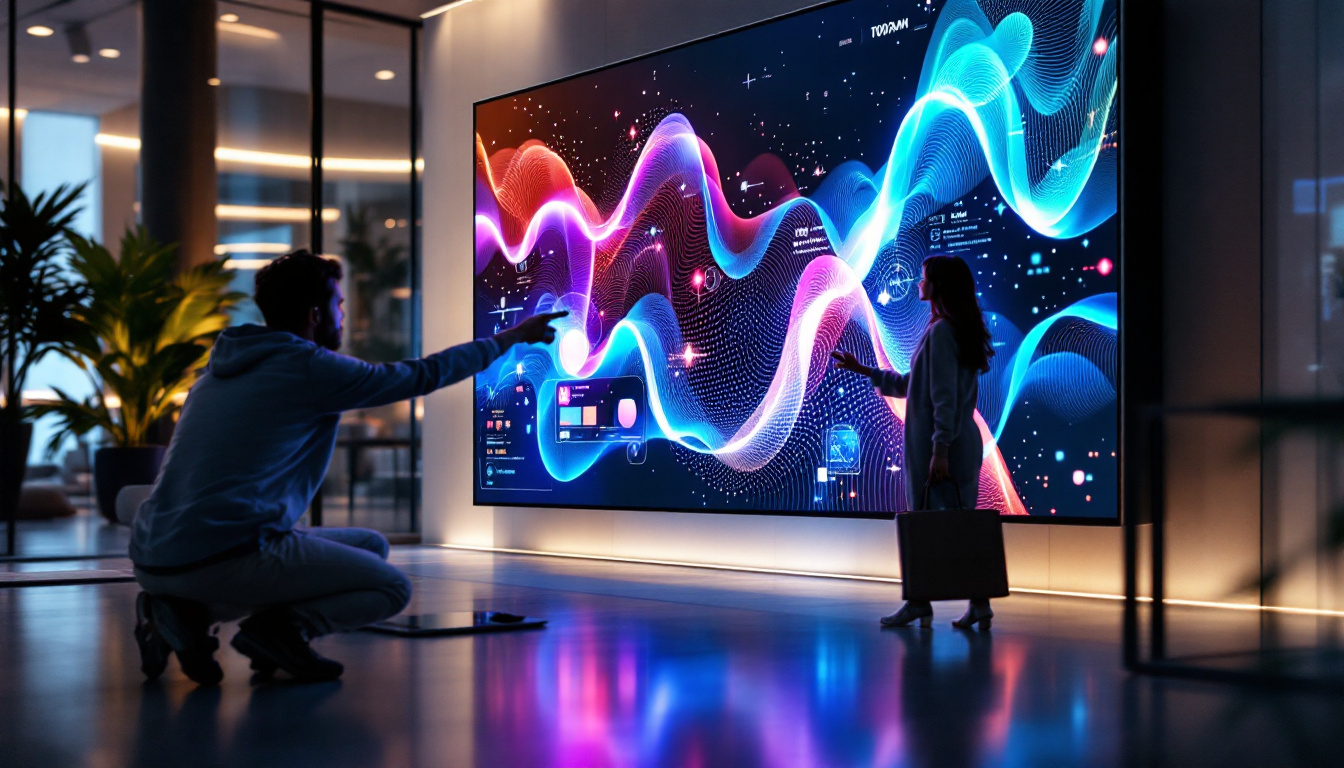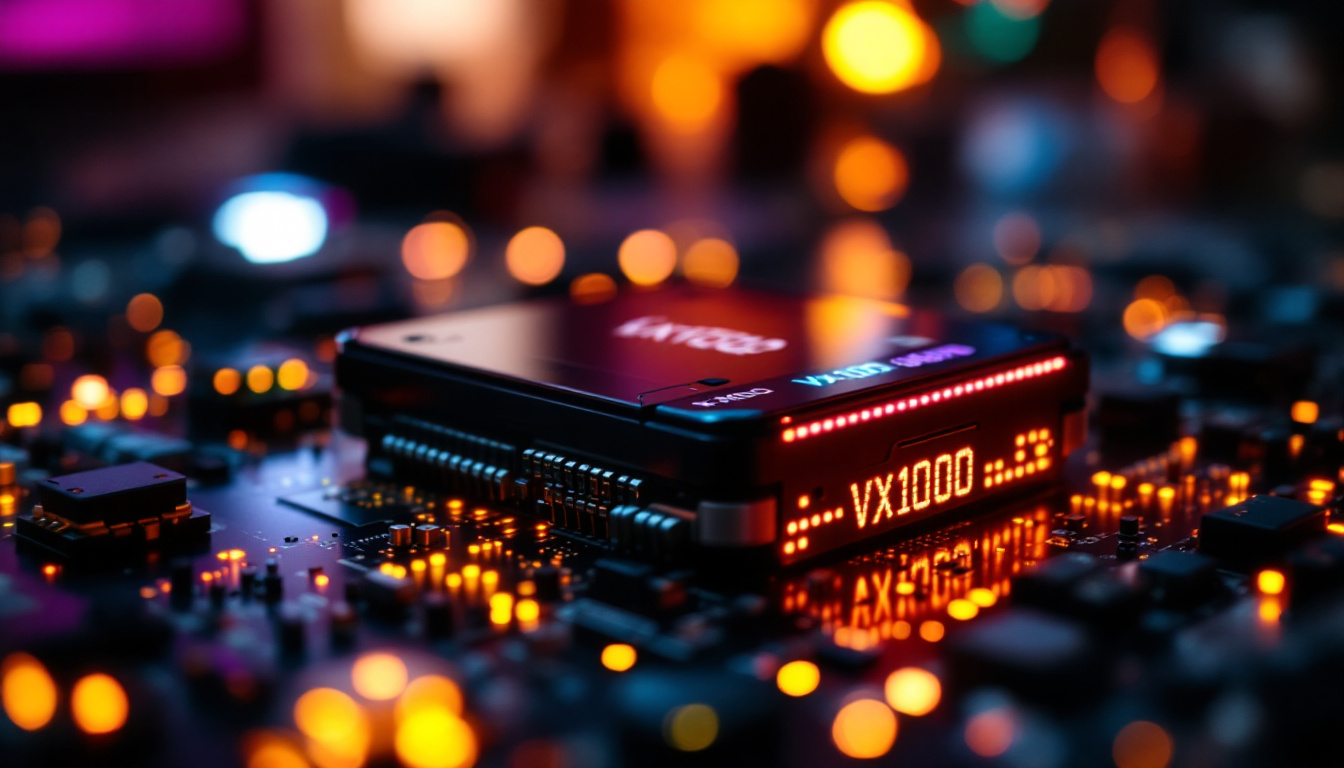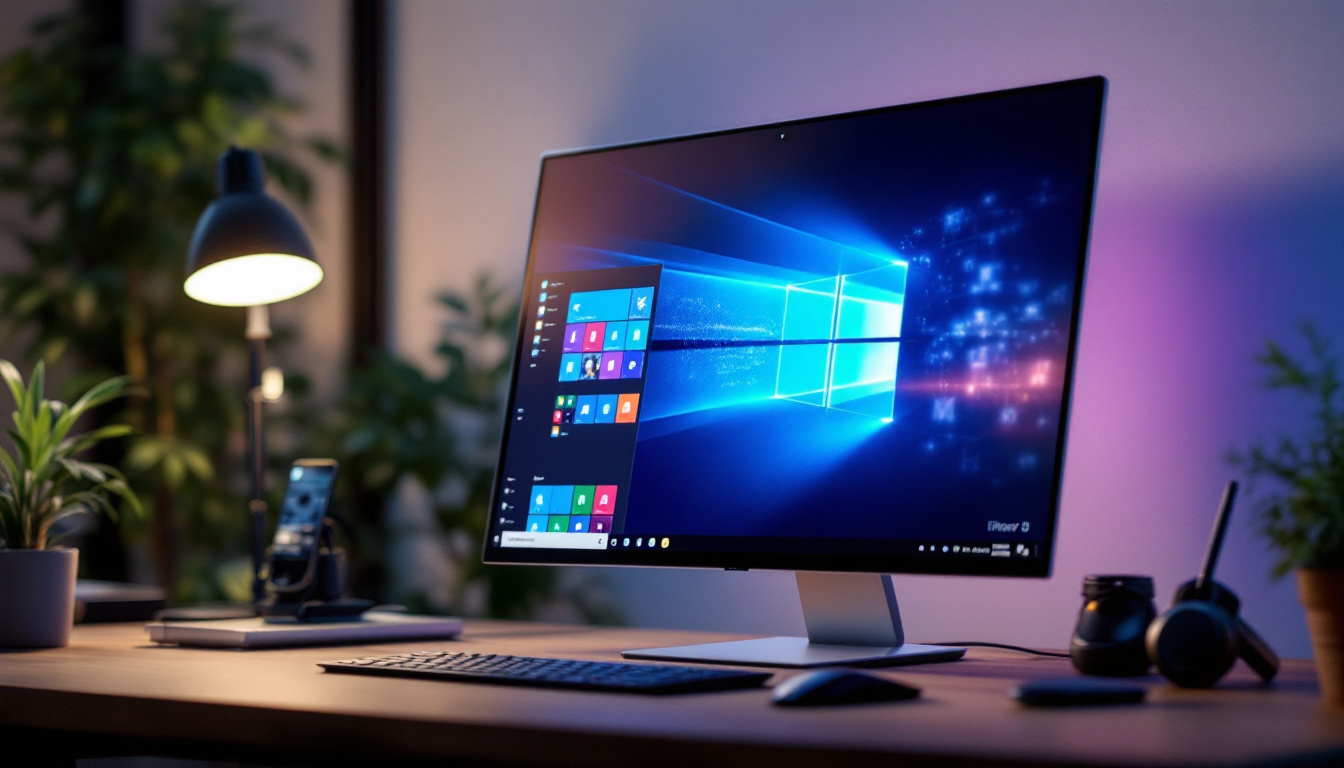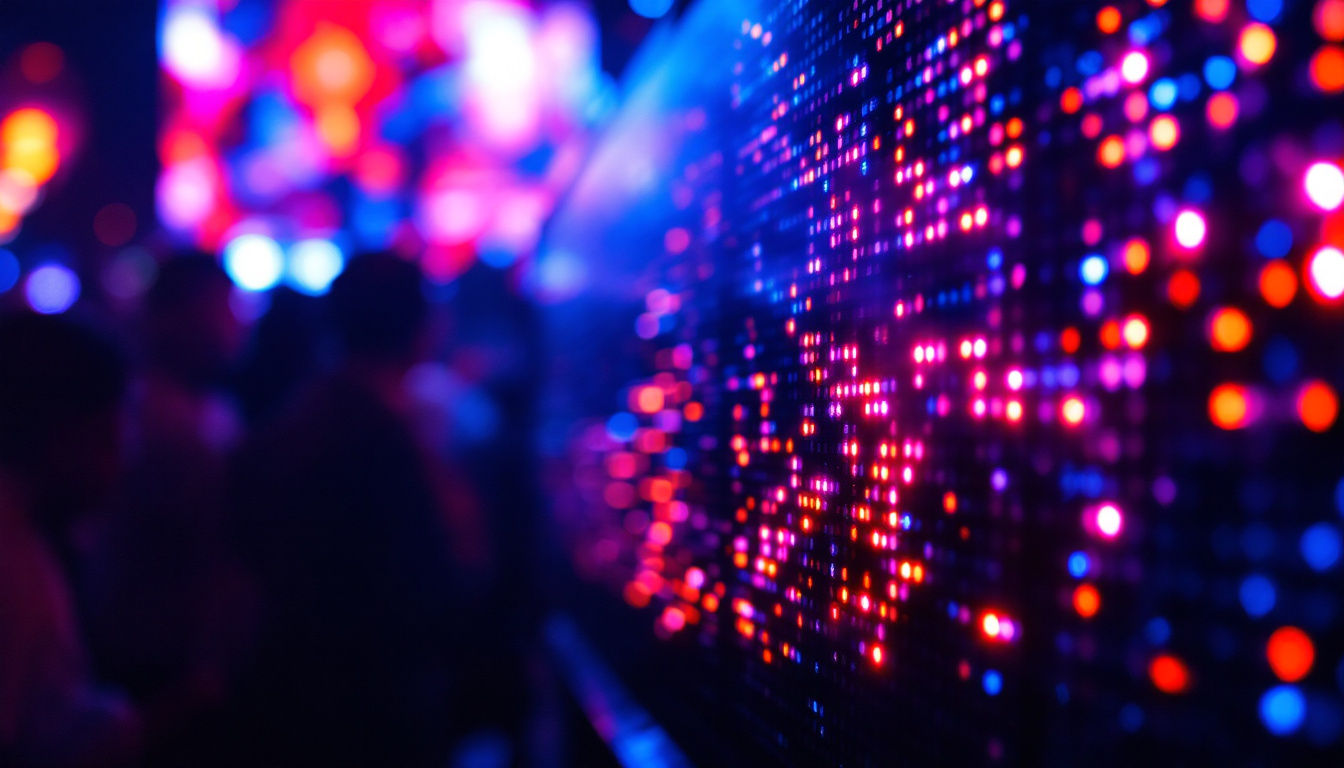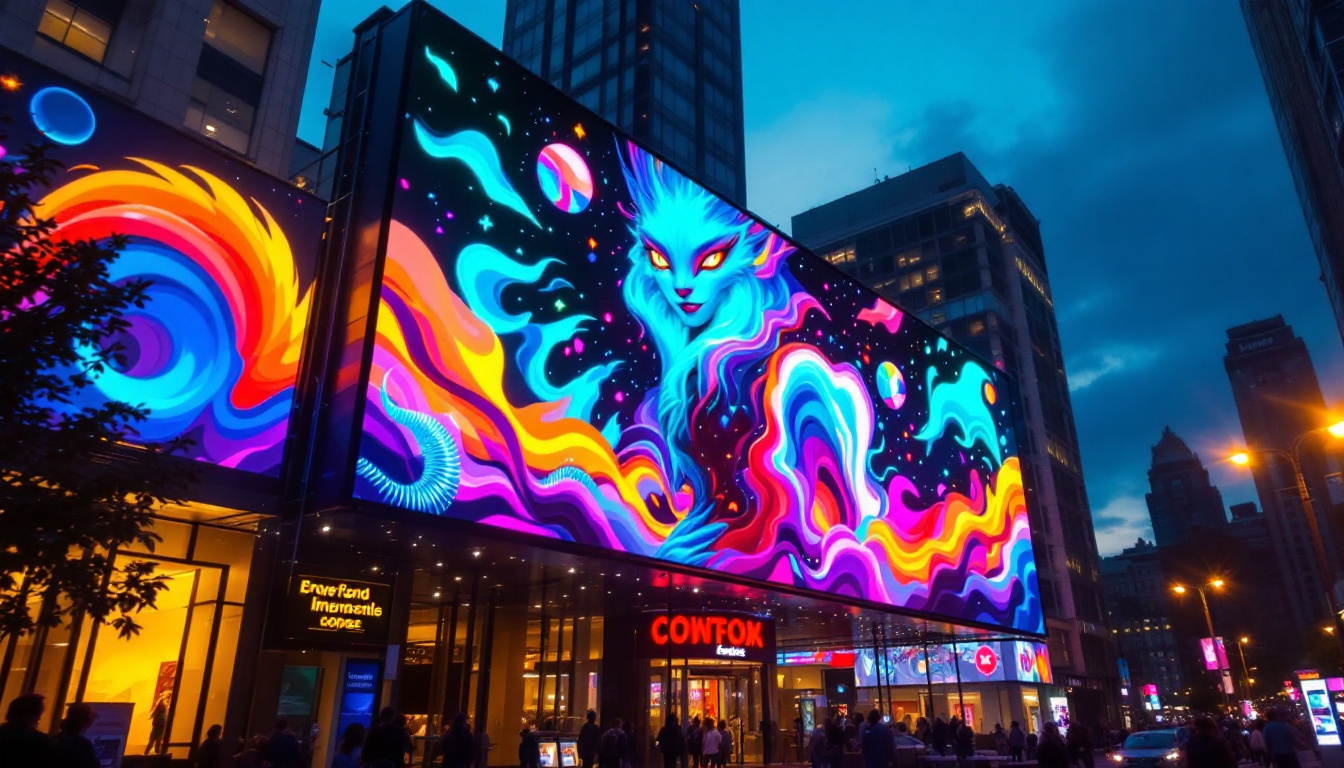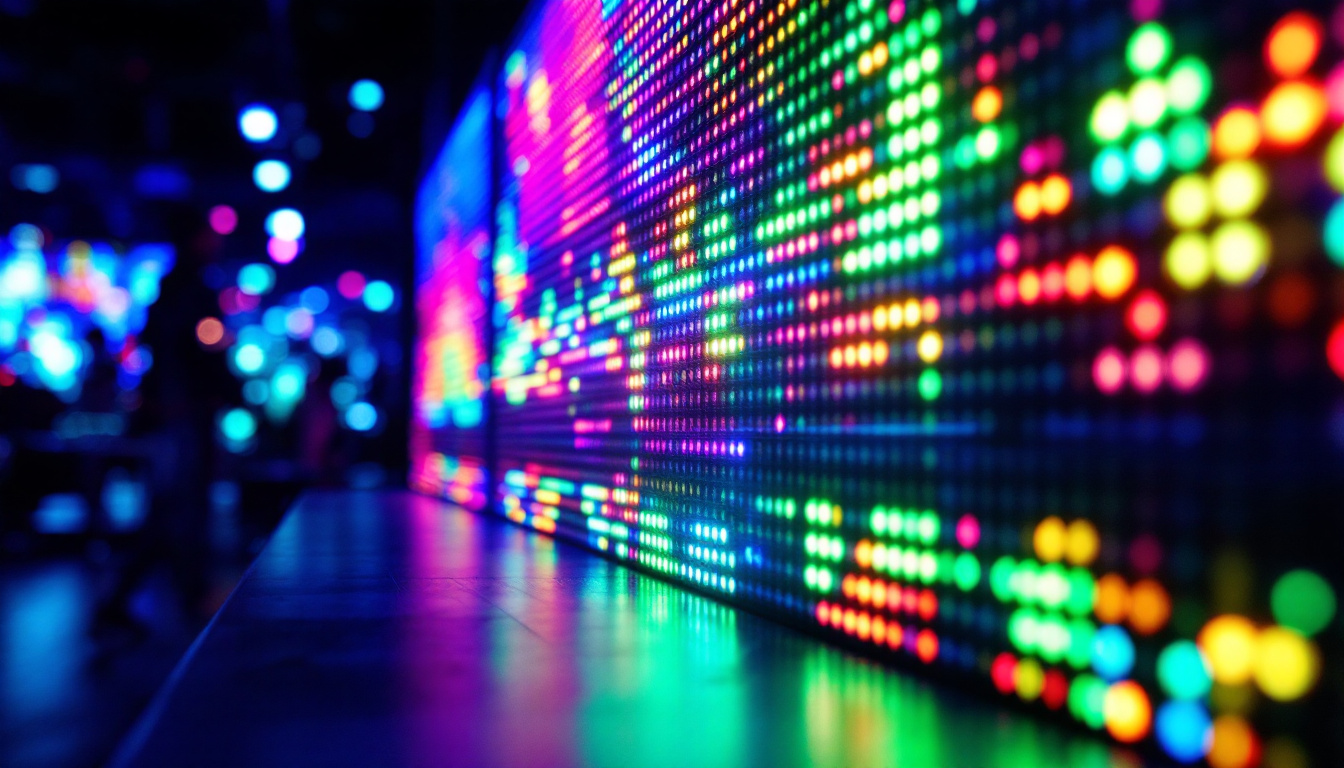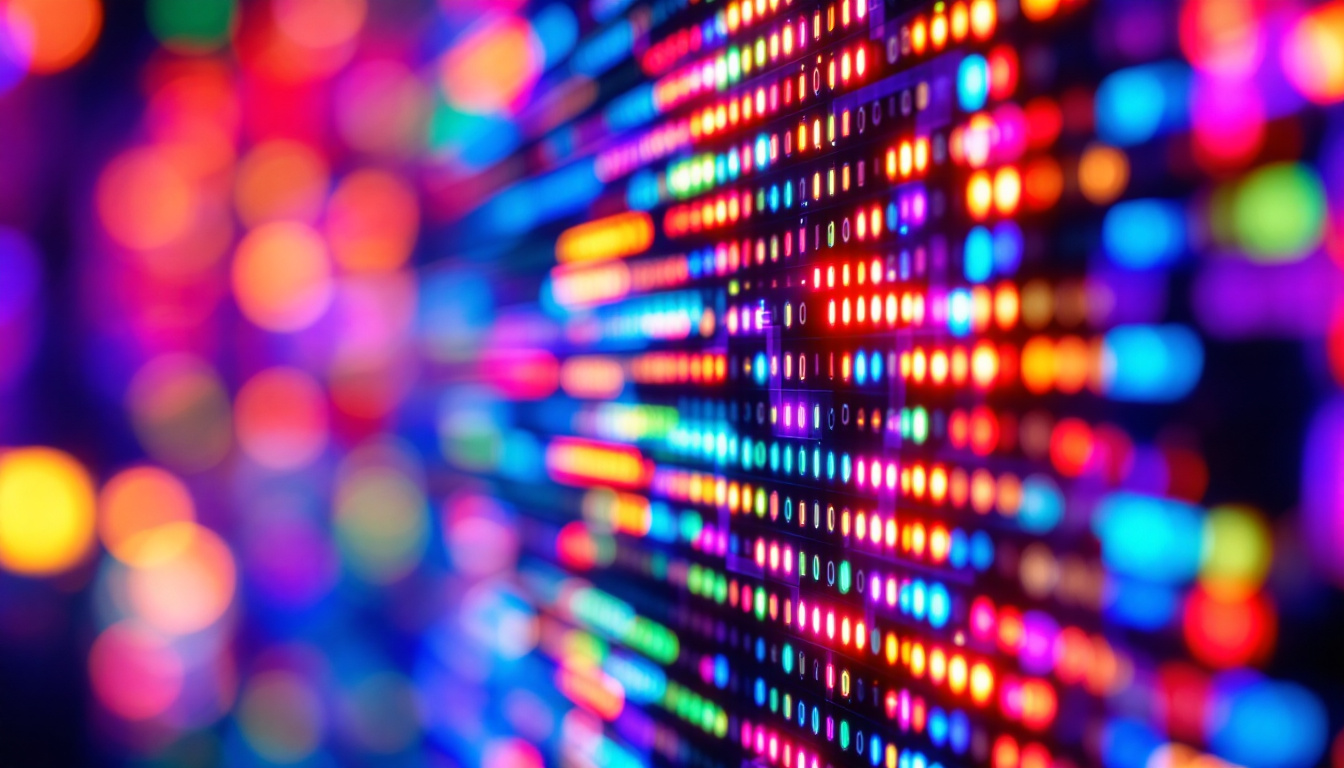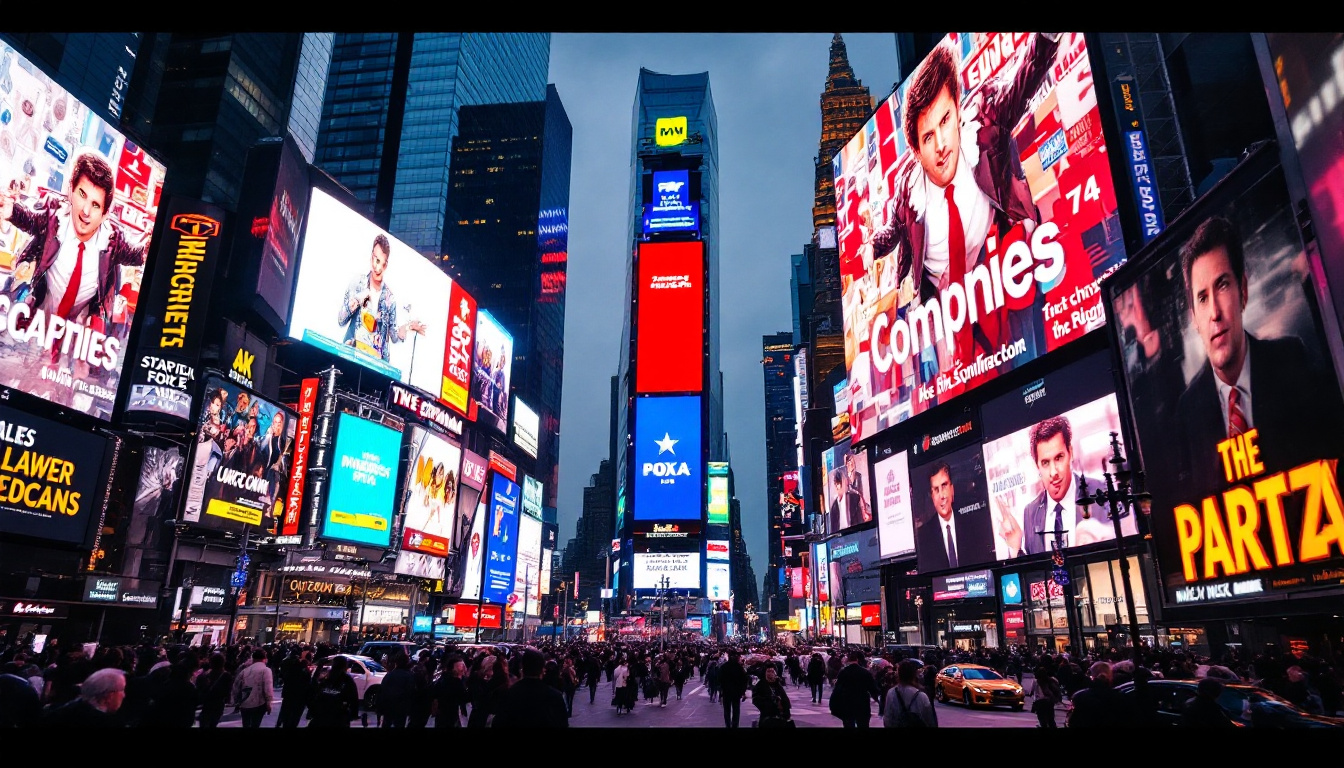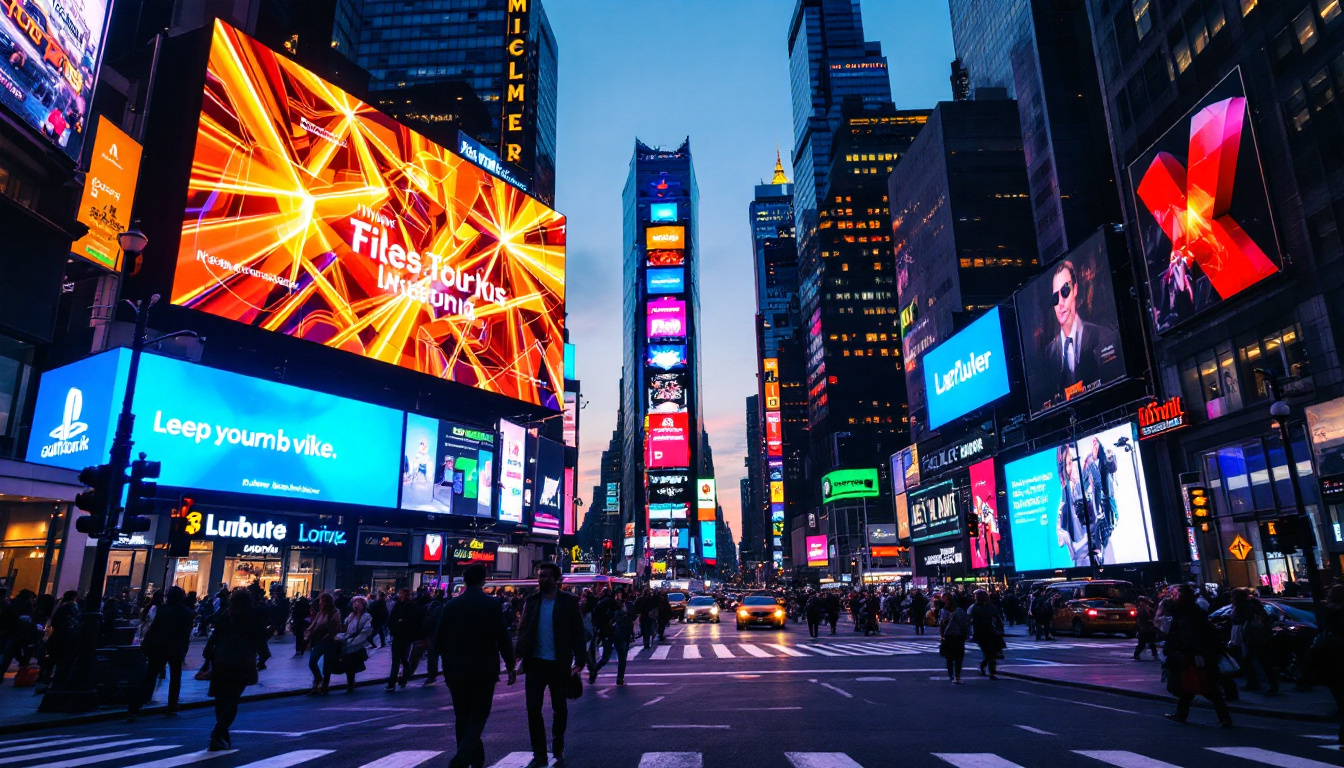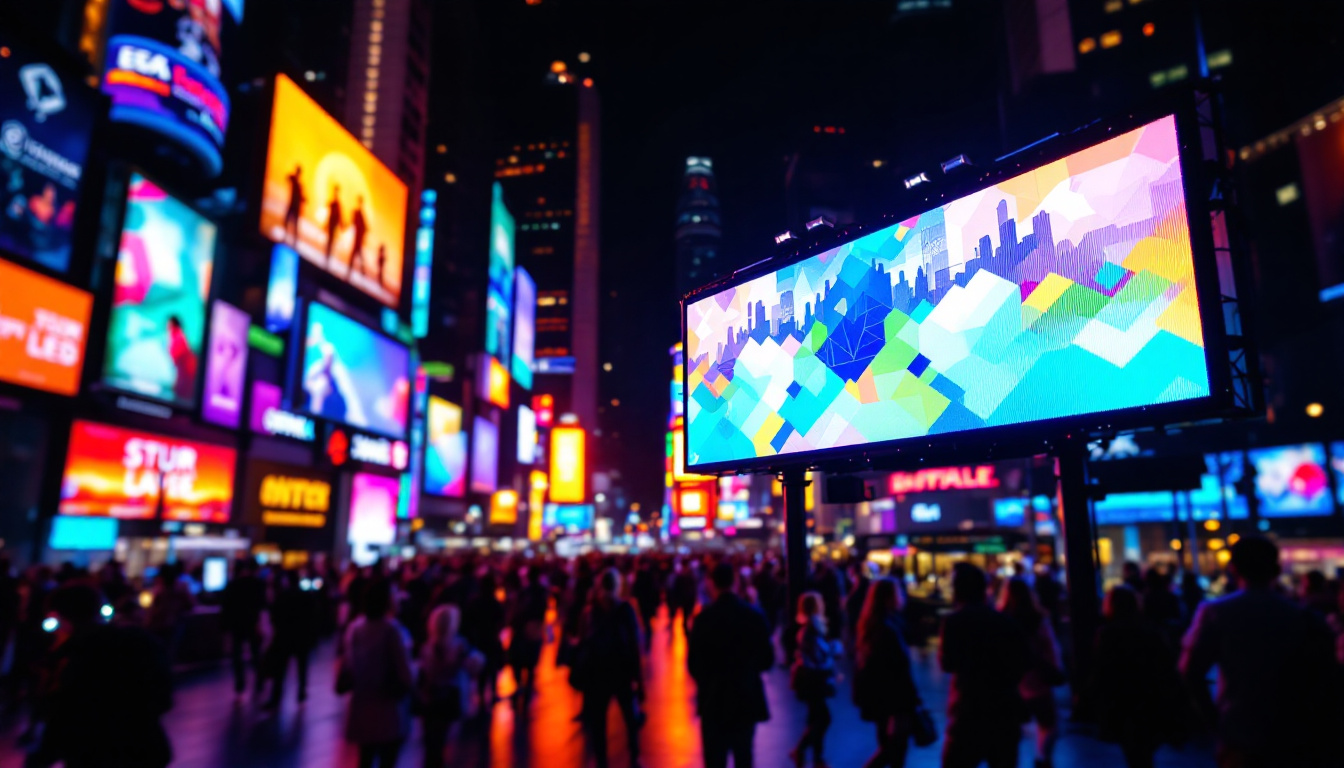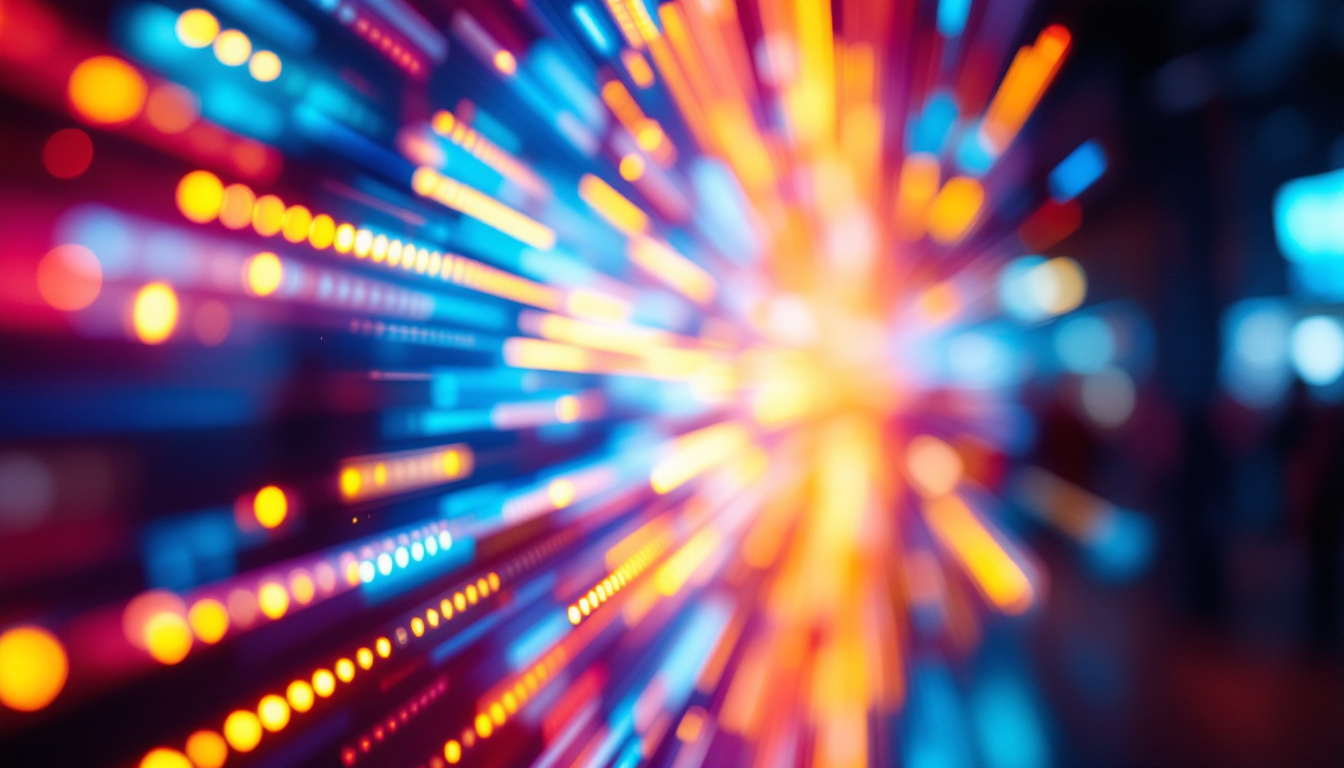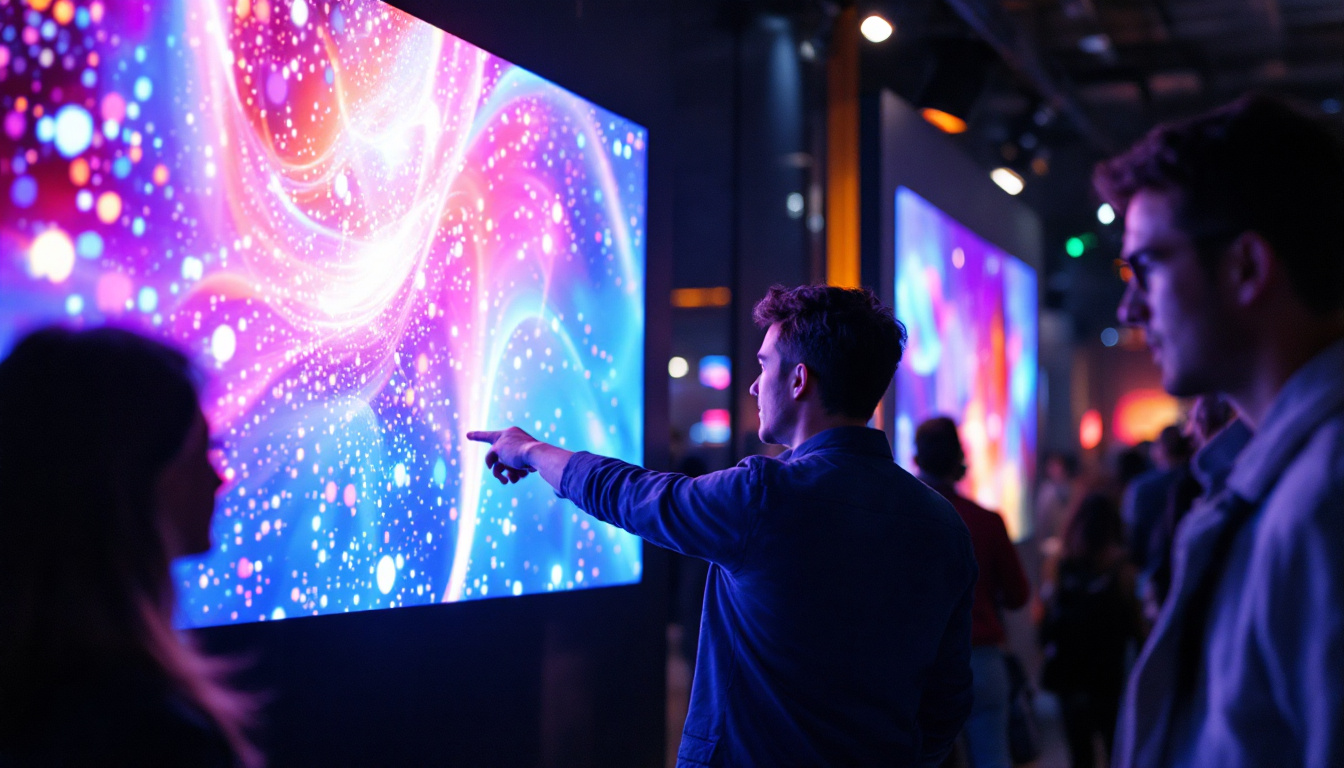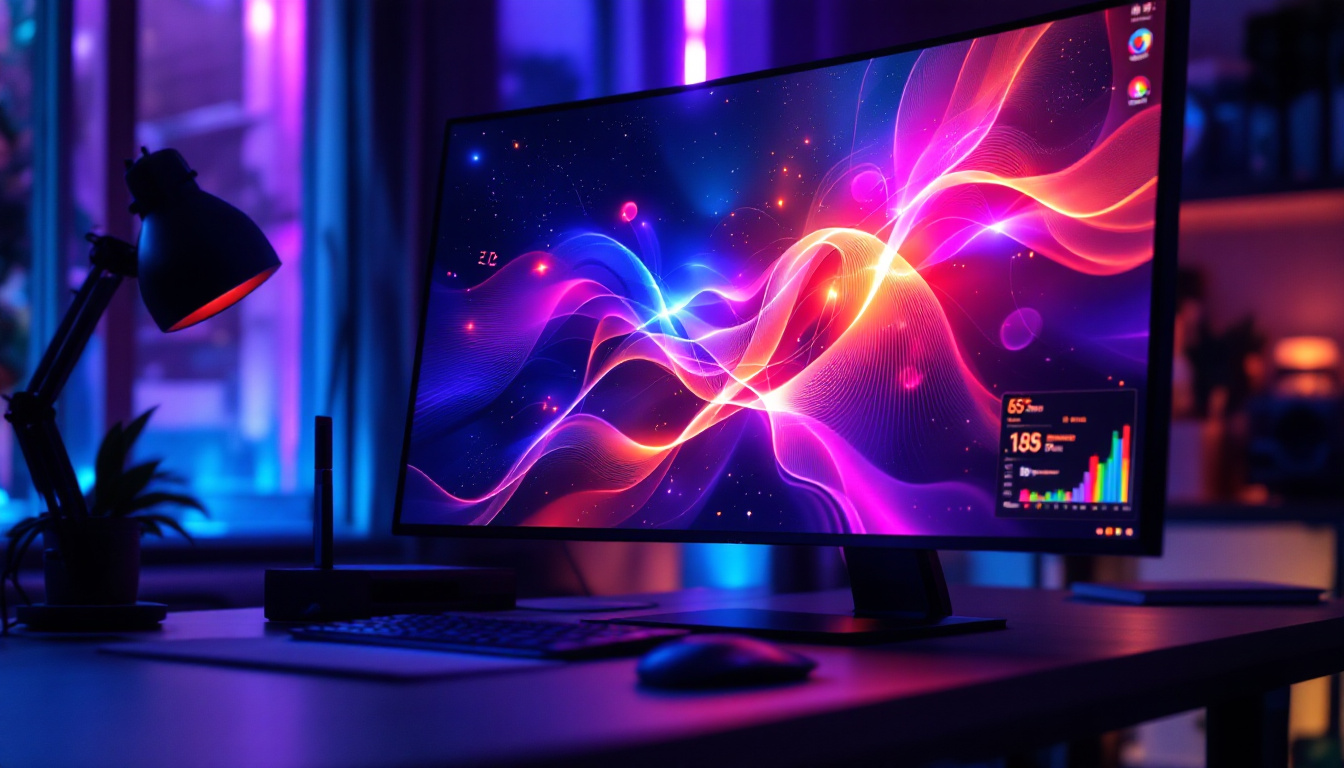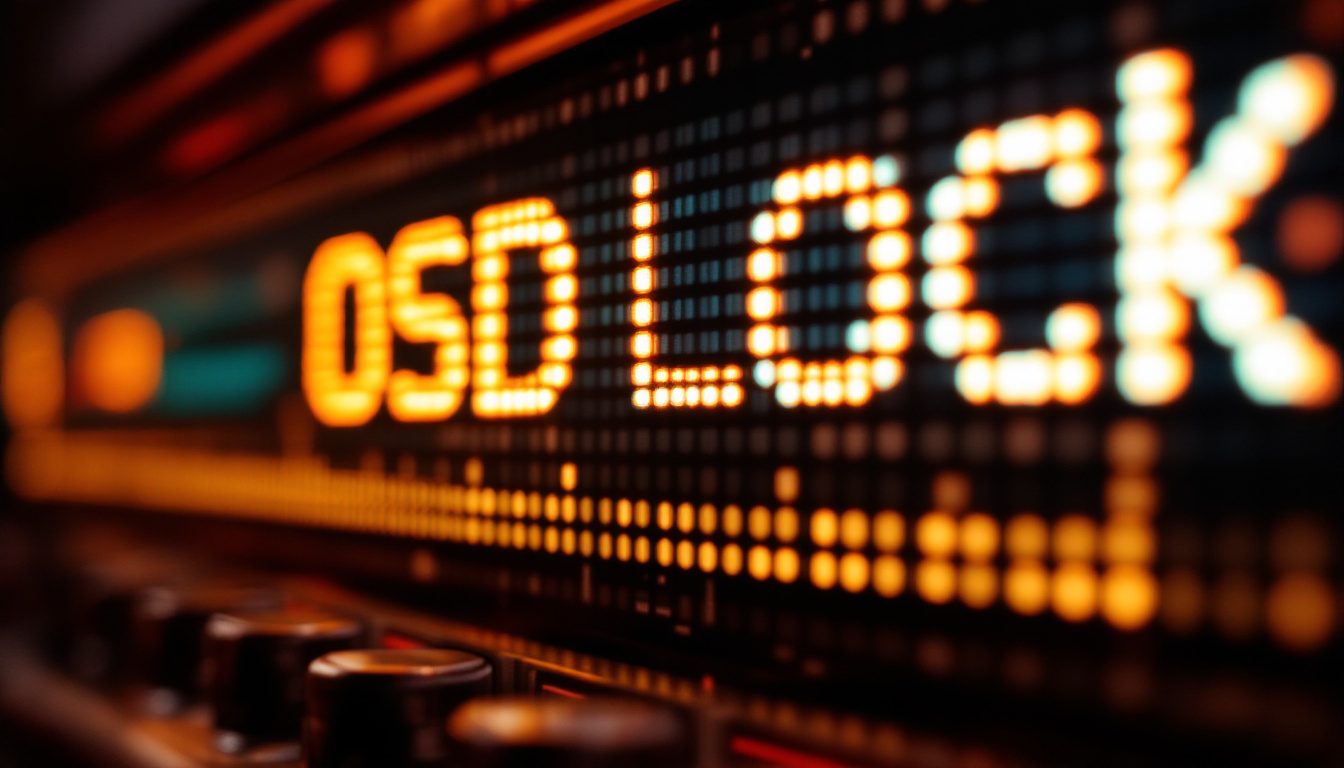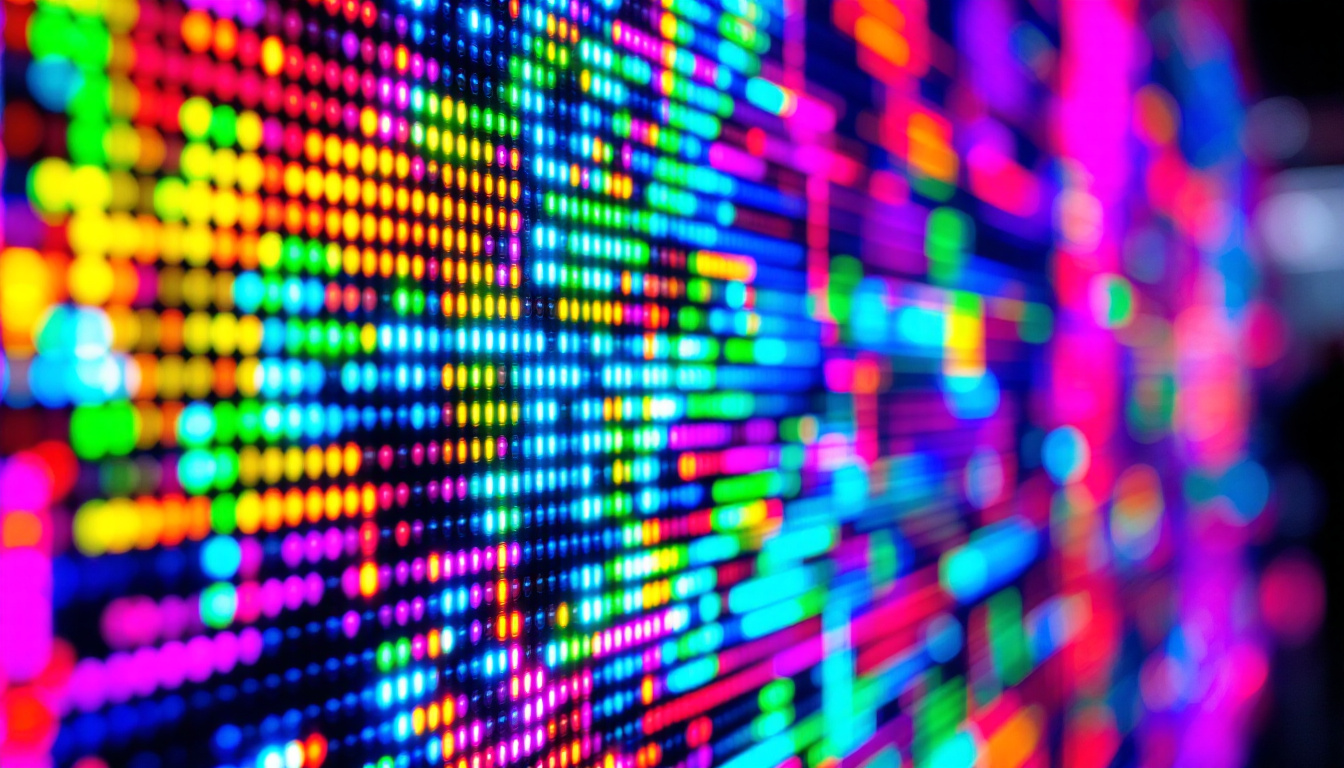In the realm of visual technology, video projectors and screens have become essential tools for both personal and professional use. Among the various types of screens available, LED displays have gained significant popularity due to their vibrant colors, high brightness, and versatility. This article delves into the intricacies of LED projector screens, exploring their advantages, how they work, and their applications in different settings.
Understanding LED Technology
LED, or Light Emitting Diode, technology has transformed the way images and videos are displayed. Unlike traditional projection screens that rely on ambient light, LED displays emit their own light, resulting in brighter and more vivid images. This section will explore the fundamental aspects of LED technology and how it enhances the viewing experience.
How LED Displays Work
LED displays consist of numerous tiny diodes that emit light when an electric current passes through them. These diodes are arranged in a grid format, allowing for the creation of images by lighting up specific diodes in varying intensities. The combination of red, green, and blue diodes produces a full spectrum of colors, enabling the display of rich and dynamic visuals.
One of the key advantages of LED technology is its ability to maintain image quality even in well-lit environments. Traditional projectors often struggle with brightness and color accuracy when competing against ambient light, but LED displays excel in such conditions. This makes them ideal for a variety of applications, from home theaters to business presentations.
Types of LED Displays
There are several types of LED displays, each designed for specific applications. The most common types include:
- Direct View LED: These displays are made up of individual LED modules that can be assembled into larger screens. They are often used for large-scale installations, such as billboards and sports arenas.
- LED-Lit LCD: This type combines traditional LCD technology with LED backlighting. It offers improved brightness and color accuracy compared to standard LCD displays.
- MicroLED: A newer technology, MicroLED displays consist of microscopic LEDs that create images with exceptional clarity and contrast. They are still emerging in the market but show great promise for future applications.
Advantages of LED Projector Screens
LED projector screens offer numerous benefits that make them a preferred choice for many users. From superior image quality to energy efficiency, these screens provide an enhanced viewing experience that can cater to various needs.
Brighter and More Vivid Images
One of the standout features of LED projector screens is their ability to produce brighter images than traditional screens. This is particularly important in environments with high ambient light, where the clarity and vibrancy of the image can be compromised. LED technology ensures that colors remain true-to-life, providing a more immersive viewing experience.
Moreover, the high contrast ratios of LED displays enhance the depth and detail of images. Darker scenes appear richer, while bright scenes maintain their brilliance, making LED screens ideal for both movies and presentations.
Energy Efficiency
LED technology is known for its energy efficiency, consuming significantly less power compared to traditional projection systems. This not only reduces electricity costs but also contributes to a smaller carbon footprint, making LED displays a more environmentally friendly option.
Additionally, the longevity of LED diodes means that they require less frequent replacements, further enhancing their cost-effectiveness. Many LED displays have a lifespan of over 50,000 hours, which translates to years of reliable performance.
Versatility and Portability
LED projector screens are available in various sizes and formats, making them suitable for a wide range of applications. From portable screens for outdoor movie nights to large fixed installations in conference rooms, there is an LED solution for every need.
Furthermore, many LED screens are designed to be lightweight and easy to transport, allowing users to set up their displays quickly and efficiently. This portability is particularly beneficial for businesses that require mobile presentation solutions.
Applications of LED Projector Screens
The versatility of LED projector screens allows them to be employed in numerous settings. Their ability to deliver high-quality visuals makes them suitable for both entertainment and professional environments.
Home Entertainment
In home theaters, LED projector screens can elevate the viewing experience to new heights. With their vibrant colors and high brightness, these screens are perfect for movie nights, gaming sessions, and sports events. Homeowners can enjoy a cinematic experience without the need for a dedicated theater room.
Moreover, many LED projector screens are designed to be aesthetically pleasing, blending seamlessly with home decor. Options such as retractable screens allow for easy storage when not in use, maintaining the visual appeal of the space.
Business Presentations
In the corporate world, effective communication is crucial. LED projector screens are widely used in conference rooms and boardrooms for presentations and meetings. Their ability to display clear and vibrant visuals ensures that important information is conveyed effectively to all attendees.
Additionally, many LED screens come equipped with smart technology, allowing for seamless connectivity with various devices. This feature enables presenters to share content directly from laptops, tablets, or smartphones, streamlining the presentation process.
Educational Settings
In educational institutions, LED projector screens have become valuable tools for teachers and students alike. They facilitate interactive learning by allowing educators to display multimedia content, such as videos, presentations, and educational software.
Furthermore, the high-quality visuals provided by LED screens can enhance students’ engagement and retention of information. As classrooms evolve to incorporate more technology, LED displays are becoming an integral part of the learning experience.
Choosing the Right LED Projector Screen
When selecting an LED projector screen, several factors should be considered to ensure that the chosen screen meets specific needs and requirements. Understanding these factors can help users make informed decisions.
Screen Size and Aspect Ratio
The size of the screen is one of the most critical factors to consider. Users should evaluate the space where the screen will be installed and determine the appropriate size based on viewing distance and audience size. A larger screen may be necessary for bigger audiences, while smaller screens can suffice for intimate settings.
Additionally, the aspect ratio of the screen should align with the content being displayed. Common aspect ratios include 16:9 for widescreen content and 4:3 for traditional presentations. Choosing the right aspect ratio ensures that images are displayed without distortion.
Resolution and Brightness
Resolution is another vital aspect to consider. Higher resolution screens provide sharper images and more detail, which is especially important for presentations that include intricate graphics or text. Full HD (1080p) and 4K resolutions are popular choices for those seeking superior image quality.
Brightness is measured in lumens, and a higher lumen rating indicates a brighter display. Users should consider the ambient light conditions of the installation space when selecting brightness levels. For well-lit environments, a screen with a higher lumen rating is recommended.
Budget Considerations
Finally, budget plays a significant role in the decision-making process. LED projector screens come in a wide range of prices, influenced by factors such as size, resolution, and additional features. Users should set a budget and explore options that offer the best value for their needs.
While it may be tempting to opt for the cheapest option, investing in a quality LED projector screen can yield long-term benefits in terms of performance and durability.
Installation and Maintenance
Proper installation and maintenance of LED projector screens are crucial for optimal performance and longevity. Taking the time to ensure that the screen is set up correctly can enhance the viewing experience and prevent potential issues.
Installation Tips
When installing an LED projector screen, it is essential to choose the right location. The screen should be positioned at a height and distance that allows for comfortable viewing. Additionally, factors such as lighting and wall color can impact the overall quality of the image.
Users should also follow the manufacturer’s guidelines for installation, ensuring that all components are securely mounted. For portable screens, setting up on a stable surface is vital to prevent any wobbling or movement during use.
Regular Maintenance
Maintaining an LED projector screen involves routine cleaning and inspections. Dust and dirt can accumulate on the screen surface, affecting image quality. Regularly cleaning the screen with a soft, lint-free cloth can help maintain clarity.
Furthermore, users should periodically check the connections and cables for any signs of wear or damage. Ensuring that all components are in good working condition can prevent technical issues during presentations or viewing sessions.
Future Trends in LED Display Technology
The world of LED display technology is constantly evolving, with new advancements on the horizon. As technology continues to develop, several trends are emerging that could shape the future of LED projector screens.
Improved Resolution and Color Accuracy
As demand for high-quality visuals increases, manufacturers are focusing on improving resolution and color accuracy. Innovations such as 8K resolution and enhanced color gamut capabilities are becoming more prevalent, providing users with even more stunning visuals.
These advancements will cater to industries that require precise color reproduction, such as graphic design, film production, and medical imaging, where every detail matters.
Integration with Smart Technology
Smart technology integration is another trend that is gaining traction. Many new LED projector screens are equipped with built-in smart features, allowing users to connect to the internet, stream content, and access applications directly from the screen.
This integration enhances user experience and simplifies the process of sharing content, making LED displays even more versatile for both personal and professional use.
Sustainability Initiatives
As environmental concerns continue to rise, manufacturers are increasingly focusing on sustainability. This includes using eco-friendly materials in production and implementing energy-efficient designs. As a result, future LED displays may not only provide superior performance but also contribute to a more sustainable future.
Conclusion
LED projector screens have revolutionized the way visuals are displayed, offering brighter, more vivid images that cater to a wide range of applications. With their energy efficiency, versatility, and superior performance, these screens are becoming the preferred choice for home entertainment, business presentations, and educational settings.
As technology continues to advance, the future of LED displays looks promising, with improvements in resolution, smart technology integration, and sustainability initiatives on the horizon. Investing in an LED projector screen can enhance the viewing experience and provide long-term value, making it a worthwhile consideration for anyone looking to elevate their visual presentations.
Discover LumenMatrix LED Display Solutions
Ready to take your visual experience to the next level? LumenMatrix is at the forefront of LED display innovation, offering a wide array of solutions that cater to your every need. Whether you’re looking to captivate your audience with an Indoor LED Wall Display, make a statement with an Outdoor LED Wall Display, or drive engagement with a Custom LED Display, LumenMatrix has the technology to bring your vision to life. Elevate your visual communication with our cutting-edge LED displays. Check out LumenMatrix LED Display Solutions today and see the difference for yourself.

